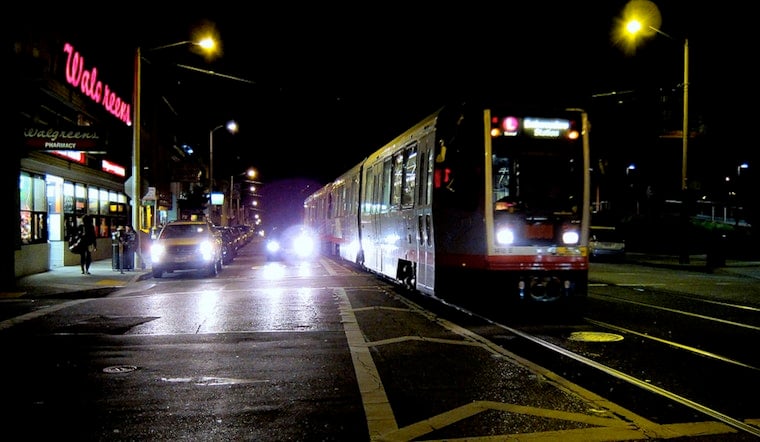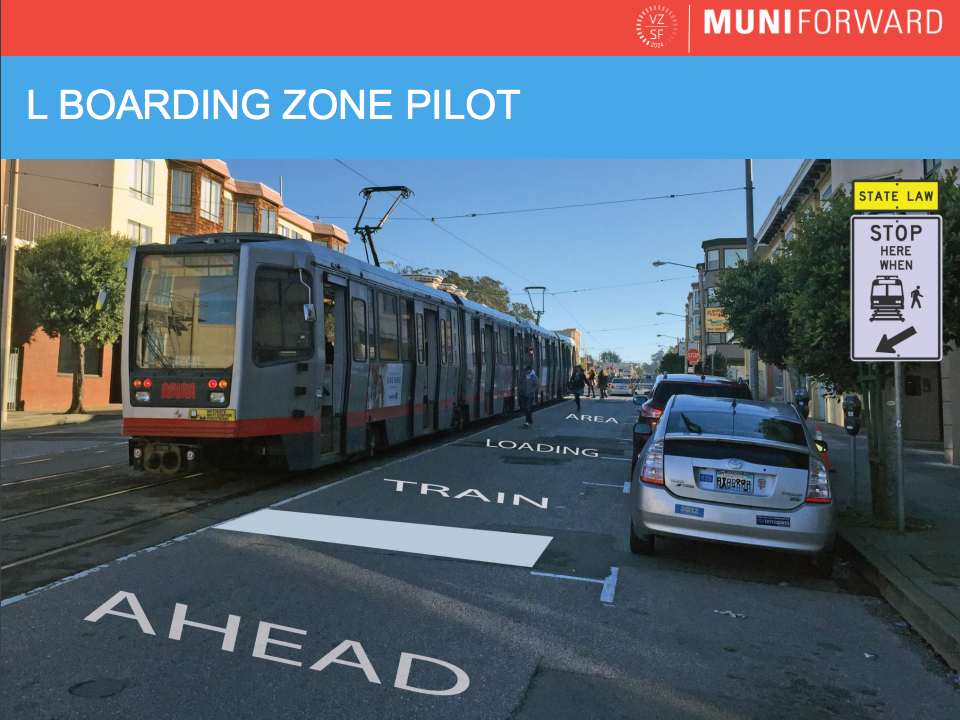
On Thursday, SFMTA's Muni Forward program released its final plan for changes along the L-Taraval line. Here’s what Muni Forward's new plan includes:
- the installation of boarding islands at certain stops
- a boarding zone pilot that involves zones painted on the street to alert drivers
- an extension for existing boarding islands to accommodate two-car L trains
- the installation of new wheelchair-accessible platforms at some of the new boarding islands
- the removal of specific stops to speed the transit route
- the installation of pedestrian bulbs along some streets
- the creation of new parking spaces, including metered spaces and time-restricted spaces near merchants
Considered one of the most dangerous corridors in San Francisco, the changes to the L-Taraval route are part of Vision Zero, the ambitious plan to lower fatalities along major transit routes and improve safety for pedestrians and cyclists.
According to the SFMTA, 46 people have been hit along Taraval Street, with 22 people hit getting on or off the L-Taraval. Ninety-five percent of collisions have occurred as people were getting off the light rail.

Boarding island locations will be installed on outbound stops at Taraval and 26th, 30th, 32nd, 40th, and 46th, and in both directions at 19th, 42nd, and 44th.
“Boarding islands are recommended by SFMTA staff because they have been effective at preventing injuries at the stops on Taraval that have them, and are the global standard for trains that load in the middle of the street,” writes the SFMTA in its letter to residents.

Since the installation of boarding islands requires the removal of parking spaces, the boarding zone pilot explores options that would allow parking to be preserved. The pilot would take place at what SFMTA terms "low-risk (inbound) stops," with no crashes between 2009-2013 and fewer than 300 people disembarking daily in the commercial corridor.
“We're looking at how many drivers comply with the state law to stop,” says Muni Forward’s Sean Kennedy in the webinar that accompanies the materials. “The current compliance rate is 60 percent on Taraval, so 6 out of 10 cars will stop, but 4 out of 10 will keep driving, causing the safety issues.
"If we can get the compliance rate to be 90 percent, we will consider it a success.”
If a boarding pilot is not successful during the six months it will be in place, then a boarding island will be built. "It's not acceptable to go back to the no boarding island position," says Kennedy.

Because the installation of boarding islands would involve the removal of 7-10 parking spaces on Taraval Street, new perpendicular parking spaces would be created on the numbered avenues between Taraval and Santiago or Ulloa Street.
Some will be metered or have time limits to encourage customer turnover, though those in front of single-family homes will remain free, without meters or time restrictions. According to the SFMTA, the new parking spaces would “result in one-to-one replacement of all lost parking on Taraval.”
Another change to the plan involves stop removal and consolidation. Originally, 14 stops were proposed for removal to improve transit times for the light rail. However, with many seniors and residents in the neighborhood were against the removal of stops, the plan was modified to keep some stops and consolidate others.
Four inbound and five outbound stops will be removed:
- Both directions: Ulloa at 15th Avenue, Taraval at 17th and 28th avenues
- Outbound only: Taraval at 22nd and 35th avenues
- Inbound only: At 24th Avenue
The inbound stop at 15th will also be moved onto Taraval, and a transit bulb built. With few stop signs along Taraval to slow down traffic, corner sidewalk pedestrian bulbs would also be installed along other streets in order to make pedestrians more visible to oncoming traffic and shorten the distance as people cross.
Because some of the changes are controversial, the plan has gone through several iterations after feedback from several community meetings, an online survey, and smaller focus groups organized by Supervisor Katy Tang, who has come under fire herself during the process.

The controversy over the L has led to screaming matches at community meetings, with some residents and merchants furious over the proposed installation of boarding islands. Some contend that the removal of parking spaces would threaten their livelihoods.
Pedestrian and disability advocates, on the other hand, maintain that boarding islands are critical to pedestrian safety.
To dive into the block-by-block detail view of the L-Taraval plans, visit the L-Taraval site for Muni Forward.
To give on-the-record feedback to city officials, a public hearing has been scheduled for 10am on July 22nd at City Hall, Room 416. Residents can also e-mail their comments to [email protected] with the subject line "Public Hearing."









